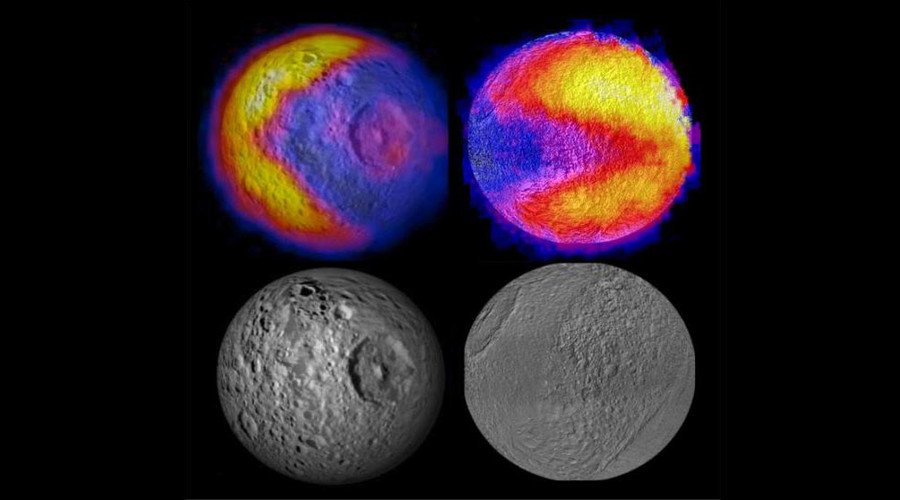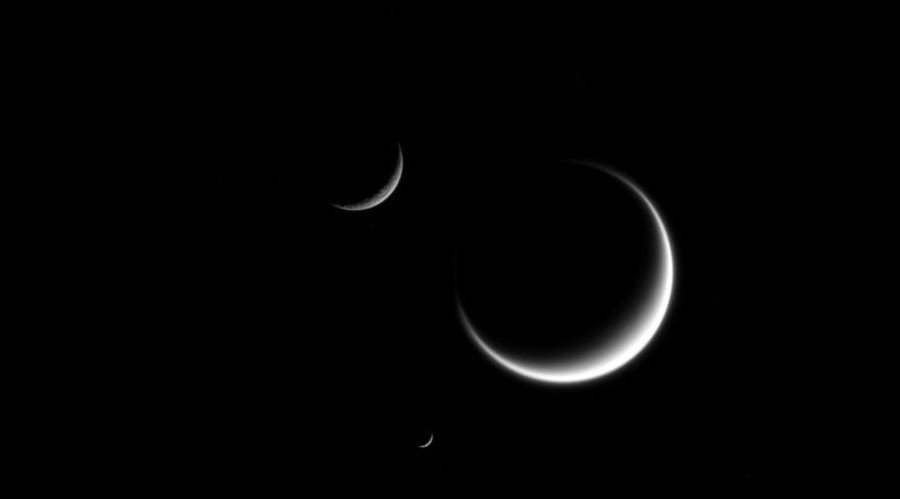Saturn’s spooky ‘Death Star’ moon captured in closest-ever NASA image

On its closest-ever flyby of Saturn’s moon Mimas, NASA’s Cassini spacecraft has captured what may be the most detailed image to date of the celestial body.
In a picture released on NASA’s website, it’s not hard to see how Mimas got its nickname – the enormous Herschel Crater dominates both its surface and the image, making the icy moon look like the Death Star, a fictional mobile space station / galactic super-weapon created by the “Star Wars” movie franchise.
The image was originally taken on October 22, 2016 at a distance of 185,000 kilometers (115,000 miles), yet NASA only released it this week.
Shadows cast across the Crater provide a visible indication of the size of the crater’s towering walls and central peak. Named after the moon’s discoverer, astronomer William Herschel, the crater is known to stretch 139 kilometers (86 miles) wide, which is nearly one-third the diameter of Mimas itself. Herschel’s peak stands nearly as tall as Mount Everest on Earth.
READ MORE: Saturn’s moon Pandora captured up close by NASA’s Cassini spacecraft (PHOTO)
Scientists still can’t say for sure what created this mysterious formation, and continue studying both the impact basin and its surrounding terrain. Their research earned Mimas yet another comparison – observing thermal data obtained by Cassini's composite infrared spectrometer last year, they spotted features shaped like the 1980s video game icon “Pac-Man.”

This time around, the image was taken with the Cassini spacecraft narrow-angle camera using a combination of spectral filters, with the view acquired at a distance of 185,000 kilometers (115,000 miles) from Mimas.
It is the latest in a series of pictures from Cassini, which has been sending back stunning images of Saturn’s rings and moons.
This one, for instance, shows Saturn’s rings and moons illuminated by what is known as “Saturnshine,” or light reflected off of Saturn.

The picture below is a rare sight for us Earthlings: while we are used to seeing a single crescent moon in the sky, with Saturn’s many moons, three or even more can be seen.

READ MORE: Pull on Pluto’s ‘icy heart’ shifted dwarf planet’s axis – studies
The Cassini-Huygens mission is a cooperative project of NASA, the European Space Agency, and the Italian Space Agency. The Cassini orbiter and its two onboard cameras were designed, developed, and assembled at JPL to explore the Saturn system, its magnetosphere, rings, and moons, with special focus on Titan.











